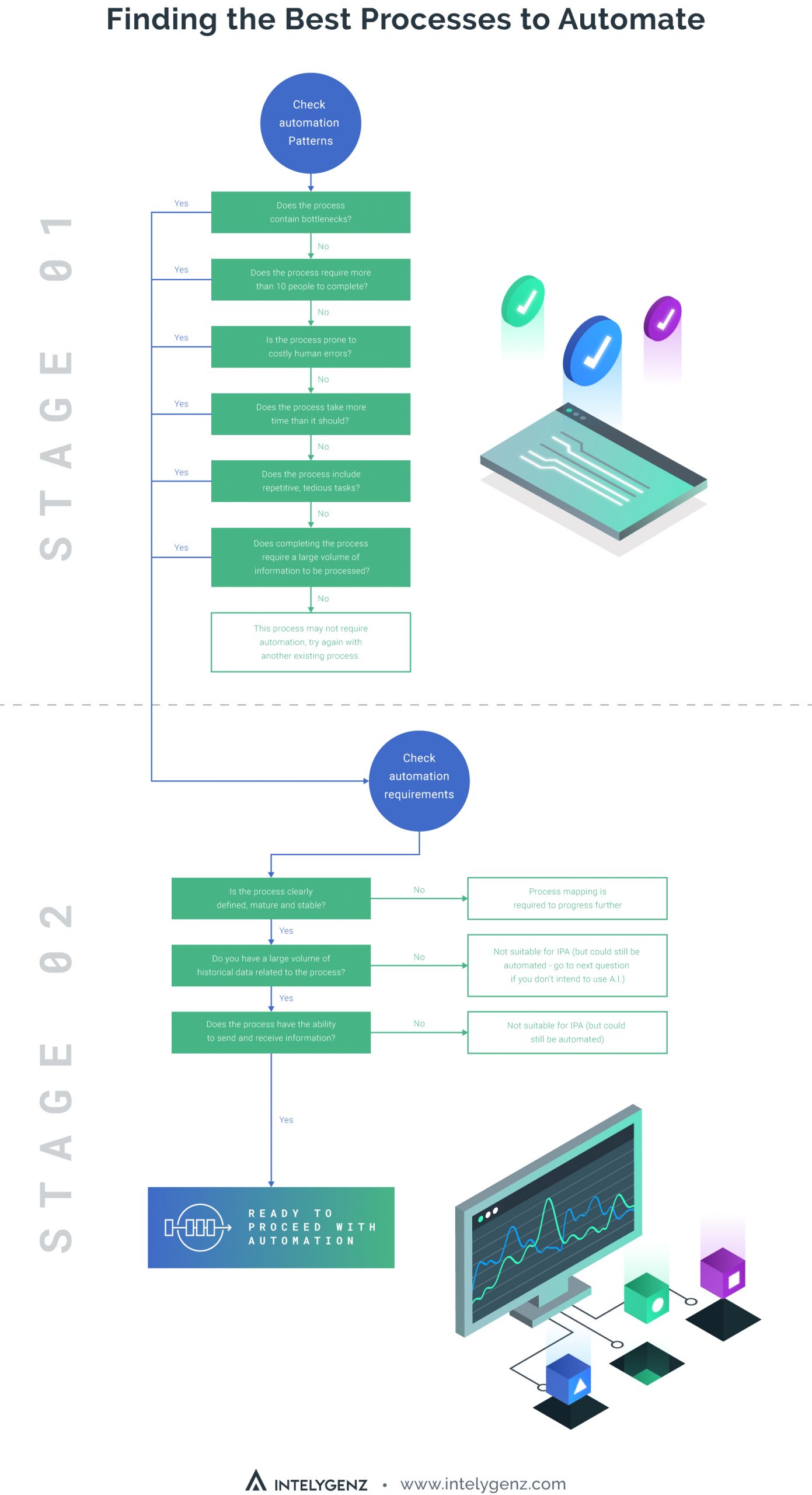Starting the Automation Journey Part 1: Identifying Process Automation Opportunities

As mentioned in ‘How to Select Your First Process Automation Project and Calculate the ROI’ , an increasing number of businesses are realizing the benefits of automating their processes, and are looking to start their own journeys with custom automation software. After all, Intelligent Process Automation has the potential to reduce process times by 50-60%, which can result in 20-35% annual run-rate cost efficiencies.
In the first of this two-part series, we’ll help you determine which of your business processes are the best candidates for automation. Once the best processes have been identified, keep an eye out for part two which will discuss the ways to calculate the potential ROI they could provide..
Finding the Best Processes to Automate
We’ve put together a simple decision tree to help your organization quickly detect processes that will help you reduce costs, increase capacity and improve quality. Take a look at one of your existing processes that you think may be a contender for automation and answer the following questions.
Click on the infographic below to break down your processes:

Stage 01
No to all: This process may not require automation, so try again with another existing process.
Stage 02
Yes to some: Consult further with an automation expert to proceed further
Yes to all: This process can be automated! Add this to your list and get ready to calculate the potential ROI in Part two. In the meantime, complete stages 1 and 2 for any other existing processes.
If you’re unsure of any of the answers to the questions above, your process may still be suitable for automation. Working with an automation partner will help you determine the quality and complexity of your processes and the relevance of the historical data you have. Get in touch to find out more.
By following this process through our A.I. Academy, our client MetTel was able to detect 30 possible processes that would be strong candidates for process automation. Read the case study in full to discover the outcome.
Once you’ve completed these stages for each of the processes you wish to automate and determined the best possible candidates, the next step is to calculate the ROI each one could achieve. A key benefit of implementing process automation is the fact that the outcomes are highly predictable, making it easy to accurately measure the ROI of the project.
Stay tuned for part two of this blog where we’ll break down the ways to calculate the ROI of your process automation projects.
Are you ready to start your automation journey? Our Intelligent Process Automation page breaks down the key benefits of cognitive automation and how it can help automate even the most complicated processes. Check it out below:

Get the latest roundup of the most important, interesting and stories from the past week. In your inbox every Saturday by 10am.
Related Articles you might like
Key Strategies for Financial Institutions to Unlock AI Value
In the financial services sector, artificial intelligence (AI) is often heralded as a transformative force capable of revolutionizing everything from […]
View Blog PostIntelygenz President Chris Brown Shares Vision to Revolutionize Finance in FinTech Magazine
Intelygenz President Chris Brown was recently featured in an in-depth interview with FinTech Magazine, in which he outlined his mission […]
View Blog PostBridging the gap: From AI concepts to production success
In recent years, the conversation around artificial intelligence (AI) has shifted from theoretical possibilities to tangible realities. As businesses strive […]
View Blog Post

